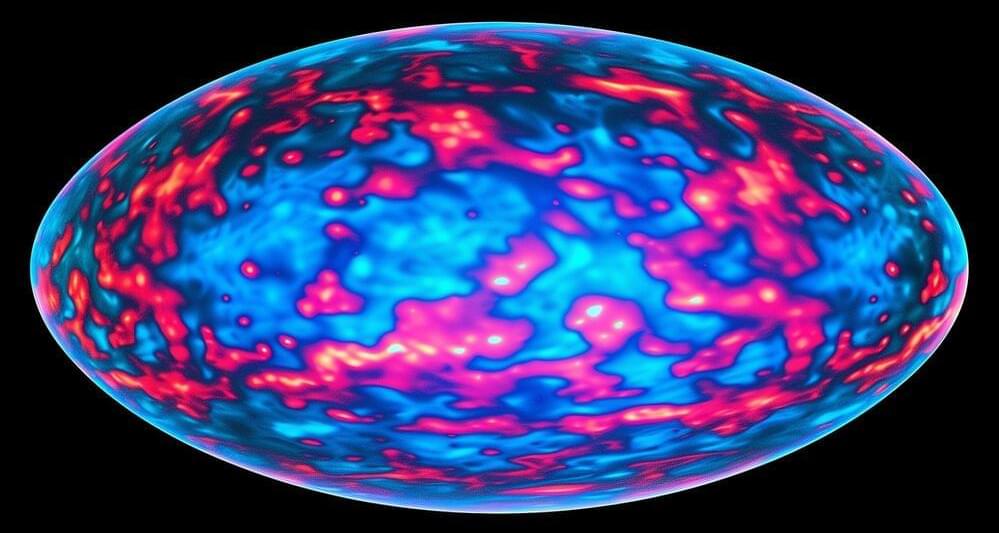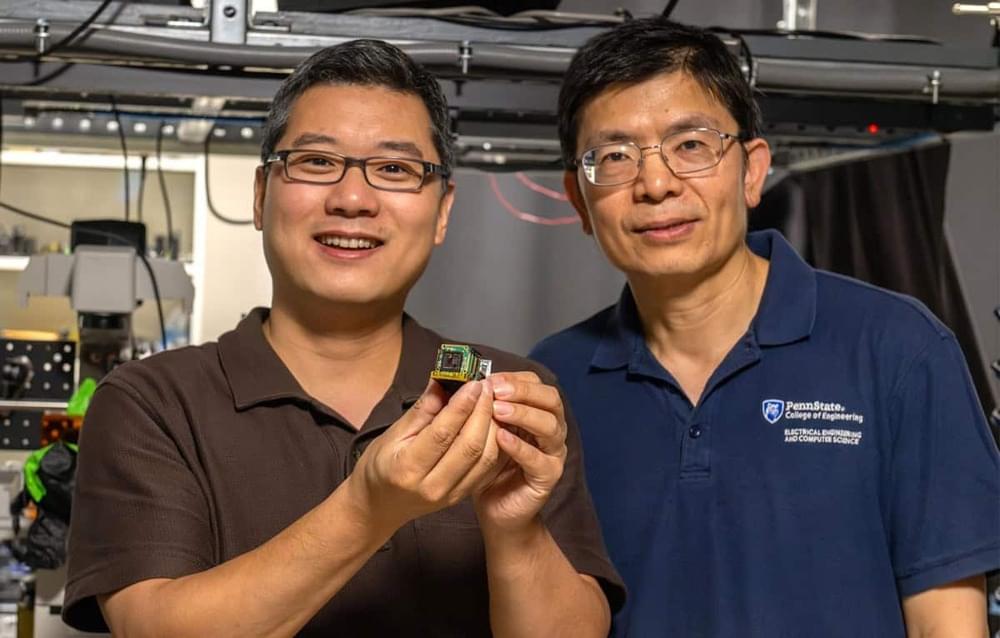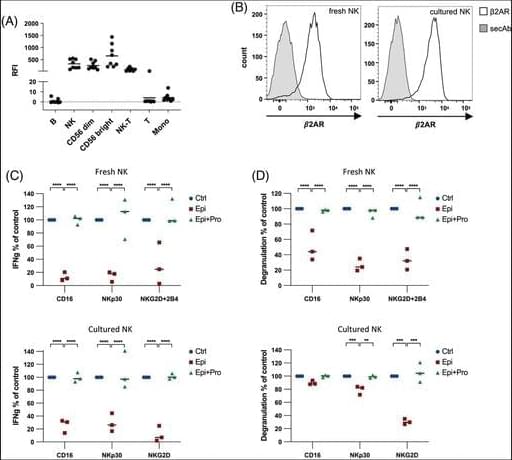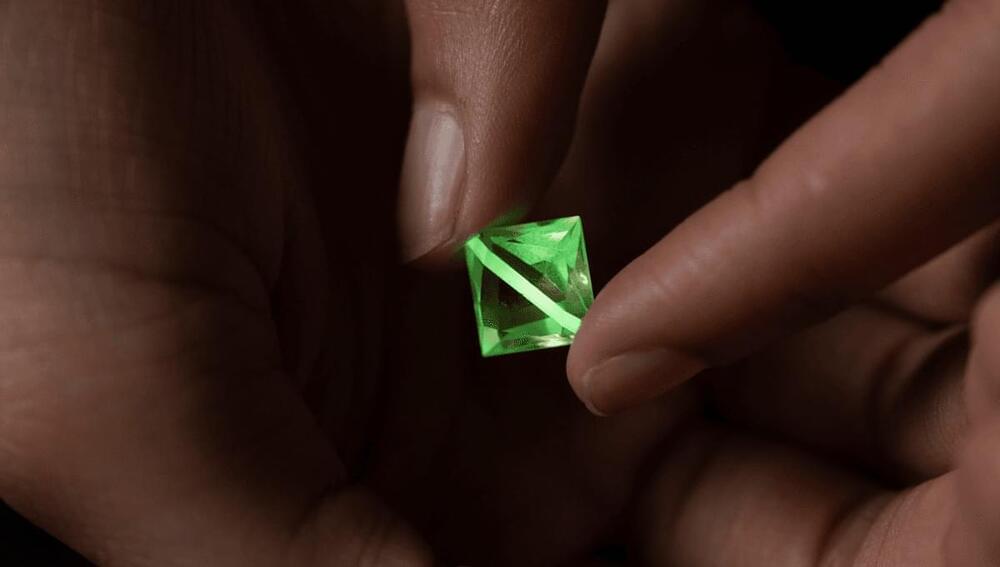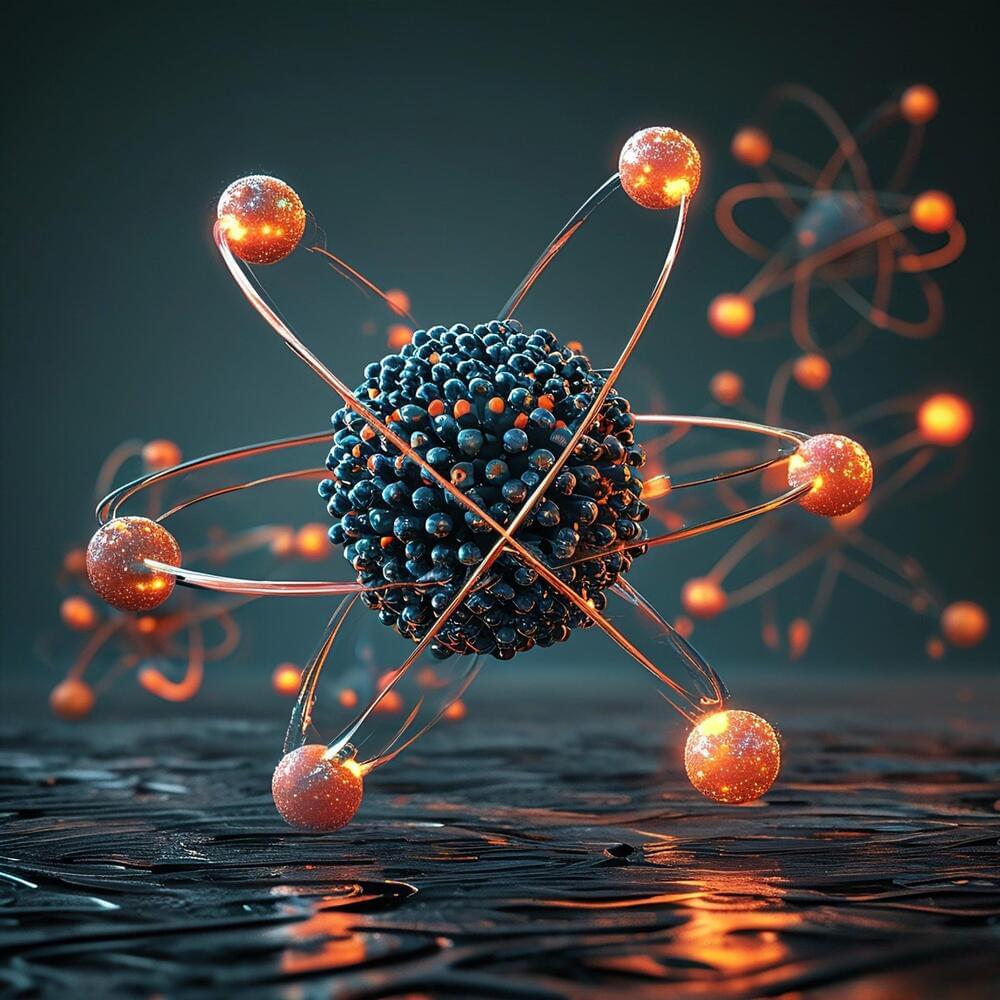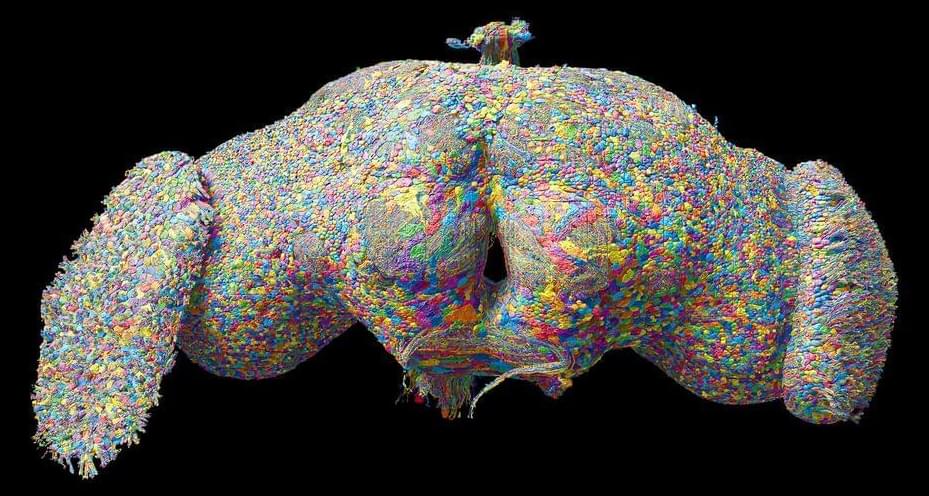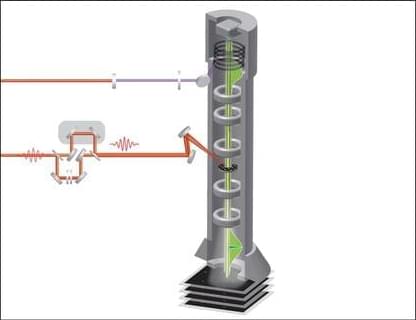Adrenergic receptors (ARs) are preferentially expressed by innate lymphocytes such as natural killer (NK) cells.
Here, we study the effect of epinephrine-mediated stimulation of the β2-adrenergic receptor (β2AR) on the function of human NK cells.
β2-Adrenergic receptor stimulation inhibits NK cell activation. (A) β2-Adrenergic receptor expression analysis of PBMCs by flow cytometry (n = 8). Subsets were assigned according to the following markers: B cells (CD19+), NK cells (CD56+, CD3−), CD56 dim (CD56dim, CD3−), CD56 bright (CD56bright, CD3−), NK-T cells (CD56+, CD3+), T cells (CD3+), and monocytes (FSC/SSC). (B) Representative β2-adrenergic receptor (β2AR) expression histograms of freshly isolated or cultured NK cells. © IFNγ secretion of fresh NK cells (top) or cultured NK cells (bottom). NK cells were pretreated with epinephrine ± propranolol (each 1 µM) and stimulated for 5 h by plate-bound antibodies as indicated. Supernatant was analyzed by IFNγ ELISA (mean, n = 3). (D) Degranulation of fresh NK cells (top) or cultured NK cells (bottom) was analyzed by CD107a expression. NK cells were pretreated and stimulated (3 h) like in ©, (mean, n = 3). Statistical analysis in © and (D) was performed using two-way ANOVA test, **** p < 0.0001; *** p < 0.001; ** p < 0.01; control set to 100%).
